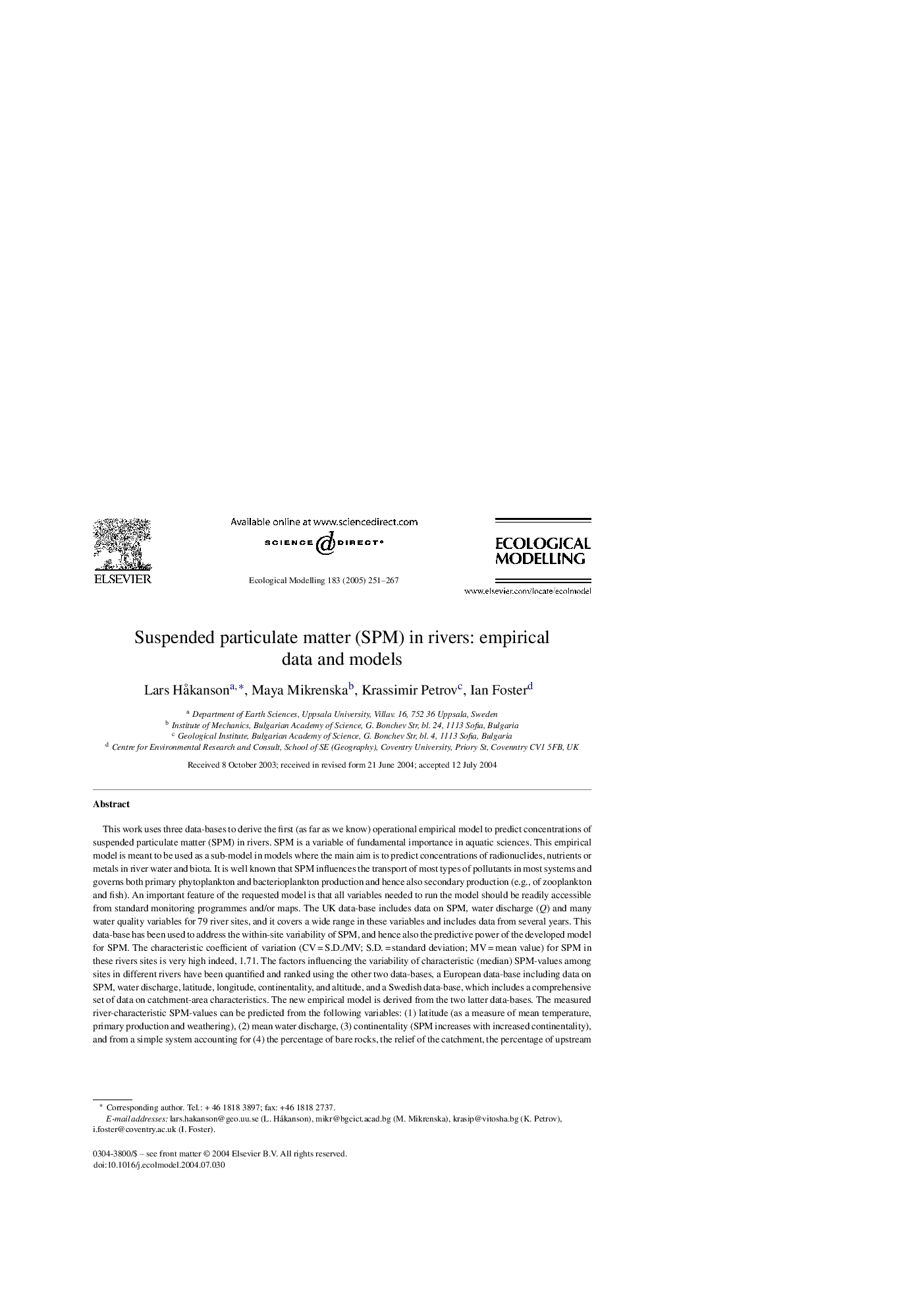| کد مقاله | کد نشریه | سال انتشار | مقاله انگلیسی | نسخه تمام متن |
|---|---|---|---|---|
| 9443544 | 1617579 | 2005 | 17 صفحه PDF | دانلود رایگان |
عنوان انگلیسی مقاله ISI
Suspended particulate matter (SPM) in rivers: empirical data and models
دانلود مقاله + سفارش ترجمه
دانلود مقاله ISI انگلیسی
رایگان برای ایرانیان
کلمات کلیدی
موضوعات مرتبط
علوم زیستی و بیوفناوری
علوم کشاورزی و بیولوژیک
بوم شناسی، تکامل، رفتار و سامانه شناسی
پیش نمایش صفحه اول مقاله

چکیده انگلیسی
This work uses three data-bases to derive the first (as far as we know) operational empirical model to predict concentrations of suspended particulate matter (SPM) in rivers. SPM is a variable of fundamental importance in aquatic sciences. This empirical model is meant to be used as a sub-model in models where the main aim is to predict concentrations of radionuclides, nutrients or metals in river water and biota. It is well known that SPM influences the transport of most types of pollutants in most systems and governs both primary phytoplankton and bacterioplankton production and hence also secondary production (e.g., of zooplankton and fish). An important feature of the requested model is that all variables needed to run the model should be readily accessible from standard monitoring programmes and/or maps. The UK data-base includes data on SPM, water discharge (Q) and many water quality variables for 79 river sites, and it covers a wide range in these variables and includes data from several years. This data-base has been used to address the within-site variability of SPM, and hence also the predictive power of the developed model for SPM. The characteristic coefficient of variation (CV = S.D./MV; S.D. = standard deviation; MV = mean value) for SPM in these rivers sites is very high indeed, 1.71. The factors influencing the variability of characteristic (median) SPM-values among sites in different rivers have been quantified and ranked using the other two data-bases, a European data-base including data on SPM, water discharge, latitude, longitude, continentality, and altitude, and a Swedish data-base, which includes a comprehensive set of data on catchment-area characteristics. The new empirical model is derived from the two latter data-bases. The measured river-characteristic SPM-values can be predicted from the following variables: (1) latitude (as a measure of mean temperature, primary production and weathering), (2) mean water discharge, (3) continentality (SPM increases with increased continentality), and from a simple system accounting for (4) the percentage of bare rocks, the relief of the catchment, the percentage of upstream lakes and the forest cover of the catchment area. The latter factors are categorised into three classes (1, 2 and 3) having little, average, or relatively large influences on the transport of suspended particulate matter from land to water. The presented model does not include any climatological variables or factors influencing daily to seasonal variations in SPM.
ناشر
Database: Elsevier - ScienceDirect (ساینس دایرکت)
Journal: Ecological Modelling - Volume 183, Issues 2â3, 25 April 2005, Pages 251-267
Journal: Ecological Modelling - Volume 183, Issues 2â3, 25 April 2005, Pages 251-267
نویسندگان
Lars HÃ¥kanson, Maya Mikrenska, Krassimir Petrov, Ian Foster,